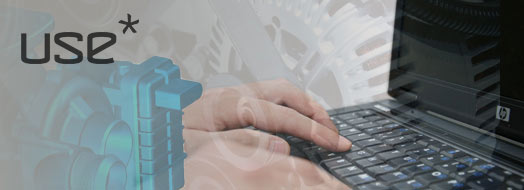Engineering Standards for Design for Service
Our experience shows that our services offer more and more value, engaged earlier and earlier in the product development process. We can achieve more in terms of enablers for aftermarket revenue and enablers that will minimise aftermarket costs when we’re engaged in the development of vehicle architecture, for example by supporting a robust engineering standards process, than we can when our input helps shape a relatively mature package.
There are benefits in both scenarios, but the benefit is inversely proportional to the maturity of the design. The biggest revenue benefits and savings can be achieved when the scheduled development of entire ranges of vehicles answers to a revenue-generating and cost-saving vision anchored in the aftermarket business cycle. This vision begins its execution in product cycle planning and planning for new technology development and integration.
Jonathan Quaife, USE* Managing Director
Digital serviceability support from USE* Automotive promotes and enculturates a design for serviceability mindset into product development activities. USE* classify these services as SERP (Service Evaluation and Repair Process), reflecting both the competent expertise that we deploy to support this function and our out of the box process toolset that we can deploy and adapt to any of our customers’ product development PLM systems.
In this case study USE* services were employed to revitalise design standards that determine how design engineers approach vehicle serviceability.

The Challenge
In the beginning of 2009 extensive restructuring in one of our prestigious automotive OEM clients enabling clearer focus on a more limited product range, provided an opportunity to reconsider engineering systems and standards.
Another issue for our client related to the status of standards that supported a serviceability agenda. Some standards that focused on design for serviceability had typically been seen as a lower priority. As a result these requirements did not require senior level management approval should a deviation from the standard be requested for a particular design. Because of this, service engineers relied heavily on the good will of design engineers to deliver designs or design amendments for the benefit of the serviceability of the vehicle.
The existing deck of standards was also deemed to be unmanageably large, outdated, and requiring significant time and effort apply and cascade the relevant standards to the design teams.
The challenge was defined by the need to refine the existing deck of service standards so that they reflected current service strategies, incorporated new technologies, and better addressed lessons learned from our client’s markets and customers.
The Solution
USE* SERP engineers were engaged as a part of a team driving a project to refine the service deck of design standards. The focus for the USE* Automotive team would be on standards relating to serviceability and warranty avoidance. This was beneficial for USE*, but also for client, because in this way USE* could bring the experience of its entire team to bear in order to strengthen our input into this exercise. Because of our client’s wide ranging overhaul of engineering standards and other systems, it was also possible to re-work the deck of service standards significantly, and to apply a sufficient level of priority to the new and revised standards so that they could not be deviated from without senior management approval.
Two hundred existing standards were reviewed and aligned to vehicle systems and attributes. Of those, almost a quarter were deleted. The remaining standards were earmarked for rework, including combining multiple standards that detailed different requirements for the same system into one (or fewer) standards; improving the usability of the service deck of standards; reworking the existing requirements’ text; and writing new standards to detail requirements for new technology, or updated service strategies for exisiting systems.
It was necessary to engage with all areas of product development in order to gain concurrence that the new and modified service design standards would be acceptable to the engineering teams to which they would be cascaded. It was also necessary to achieve sign-off from senior level management. This allowed the standards to be aligned with the high level strategy for the client’s business.
Once sign-off was achieved, the final stage of the project was to populate the generic deck of service standards to the client’s standards management system, ready for cascading to specific vehicle programmes.
Its Benefits
The key benefit has been to raise the priority profile of serviceability standards generally. All the new standards require senior sign-off should a deviation be sought. This will add weight to any request for design changes to improve serviceability.
The new standards capture significant service lessons learned, based on the broad experience of both the client and the USE* teams. And new standards have been introduced to account for emerging technologies. Successful delivery against the new standards will mean an even more innate approach to design for serviceability at client - a key objective for USE* Automotive’s support with any of our customers.
The new standards deck also achieved our goal of reducing workload for service programme coordinators whose role includes creating vehicle programme specific decks of service standards cascaded to the relevant engineering teams.
Our Achievements
Through working extensively with the client’s standards management team, USE* Automotive were among the first to fully embrace the advantages of working with design standards that are focused specifically on client aftermarket strategies. As a result, a significant contribution was made to the definition of the interim stand alone requirements management system. Recognised by the standards management team, USE* Automotive SERP engineers have subsequently been engaged in the selection process for the client’s future standards management system.
Case Studies
Case Studies
Engineering Standards
‘Design for Service’ requirements from USE*
Rear Underseat Design
Cost effective high frequency repairs
USE* and New Technologies
‘Engineered in’ service strategies
US$164 million benefit
Affirming the value of SERP with warranty data